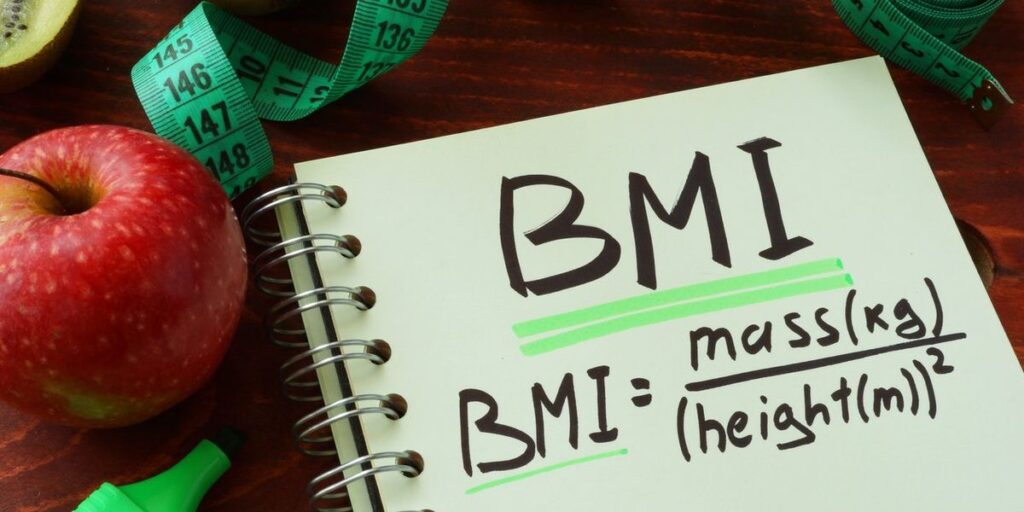Are we saying goodbye to BMI?
Body mass index (BMI) — the measure of physique fats based mostly on top and weight — has been round for many years. For years, your BMI has been used to find out whether or not you’re in a “wholesome” weight vary based mostly on pointers set by the World Well being Group.
Because it was created in 1972, BMI has been a regular measure of well being and a screening device for illnesses together with weight problems. It’s additionally used to trace population-level tendencies amongst public well being.
However it turns on the market are some severe points with utilizing BMI as an indicator of well being — particularly for ladies and other people assigned feminine at delivery.
BMI limitations
Fatima Cody Stanford, M.D., M.P.H.,M.P.A., an affiliate professor of drugs at Harvard Medical Faculty and an weight problems medication physician-scientist, stated BMI has been flawed from the beginning contemplating it’s based mostly on measurements of white men. “We’re not males,” Stanford stated. “I actually see that as problematic for us to simply assume that males are the baseline and customary as a result of we do have variations.”
For instance, ladies are inclined to have extra physique fats in comparison with males with the identical BMI, however BMI doesn’t assess physique fats share, which may have an effect in your well being.
Stanford famous that girls additionally expertise modifications in hormones all through life that may have an effect on physique fats distribution. And he or she finds it irritating that the variations between men and women aren’t being thought-about.
For girls of shade, the historical past of BMI turns into much more problematic. A lot in order that the American Medical Affiliation (AMA) not too long ago issued a policy change concerning BMI as a measure of drugs due to “its use for racist exclusion, and since BMI relies totally on information collected from earlier generations of non-Hispanic white populations.”
Beneath the brand new coverage, the AMA recommends that healthcare suppliers bear in mind the completely different physique shapes and composition throughout race/ethnic teams, sexes, genders and ages along with different danger components. Contemplating about 6 out of 10 Black ladies reside with chubby or weight problems within the U.S., and BMI is the only real indicator for analysis for the illness, this may have a significant influence on the way in which suppliers method analysis and well being situations — all the things from treatment options to insurance coverage prices.
Read: The Importance of Making Obesity Treatment Accessible >>
“I’ve been certainly one of these people who find themselves actually making an attempt to boost the alarm on BMI as a solo measure,” Stanford stated. “BMI shouldn’t be a well being indicator — it simply tells us top and weight. It doesn’t give me something concerning the well being of a person.”
The “M” doesn’t stand for muscle
One other main flaw is that BMI doesn’t bear in mind physique fats vs. muscle. And muscle weighs greater than fats. For instance, research exhibits Black individuals might have much less physique fats and extra lean muscle mass than white individuals on the identical BMI.
This may additionally pose a problem for people who find themselves athletes and carrying extra muscle, and muscle carries extra weight, which makes the BMI an inaccurate measure of well being.
Lately, you’ll have seen American rugby star Ilona Maher taking on the issue of BMI on social media. In a viral TikTok video, Maher responds to a commenter who criticized her weight, saying that Maher has a 30 BMI, which might put her within the obesity category by BMI standards.
Maher responded that she’s been labeled “chubby” her total life regardless of being an athlete. “BMI doesn’t inform you what I can do. It doesn’t inform you what I can do on the sector. How match I’m. It’s simply a few numbers put collectively,” Maher stated within the video. “It doesn’t inform you how a lot muscle I’ve, or something like that.”
A number of days later, Maher and the U.S. ladies’s rugby workforce received a historic bronze medal on the Olympics. So it appears the present and future plans altering the way in which we have a look at BMI couldn’t begin quickly sufficient.
New pointers for BMI
Presently, BMI is the one option to diagnose obesity. Stanford is among the specialists on a fee that’s engaged on a medical definition for weight problems and up to date pointers for diagnosing and treating the illness.
Read: Is Obesity a Disease? Yes — and the Medical Community Is Finally Recognizing That >>
She stated she’s devoted her life and profession to serving to people who find themselves residing with weight problems, and BMI simply doesn’t work on a person degree. “Individuals have been so married to this concept that this one quantity tells me about your well being with out delving beneath the floor,” Stanford stated.“What’s the ldl cholesterol that goes with that quantity — what’s the blood stress that goes with that quantity?”
Stanford stated the brand new suggestions from the fee, which needs to be out in September, put little emphasis on BMI and supply a extra complete have a look at the precise science behind weight problems, which is essential to treating the illness.
“Right here we’re in a spot in 2024 the place medication does must take an lively stance and really take into consideration well being and that is what we’re doing,” Stanford stated. “Weight problems is a persistent illness and we should always deal with it as such.”
From Your Website Articles
Associated Articles Across the Internet
